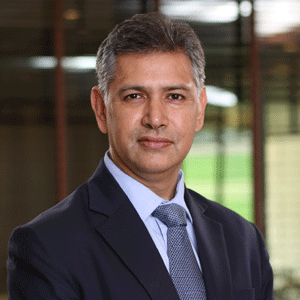THANK YOU FOR SUBSCRIBING

NetGuardians: The Trusted Financial Security Partner

 Joël Winteregg, Co-Founder, Board Member & CEO
Joël Winteregg, Co-Founder, Board Member & CEOHowever, as digital banking continues making transactions more convenient and easy for customers, it is also leading to an increase in digital banking frauds. And amid this tumultuous situation, many banks are now realizing that their traditional anti-fraud rules are falling short on multiple grounds, be it letting a potential scam slip through, or equally worse, flagging a genuine transaction as a suspicious one. These shortcomings are primarily stemming from hundreds of static, reactive rules that govern typical anti-fraud algorithms’ financial data analytical capabilities. “The main problem for many banks is that they don’t have enough historical data on fraudulent transactions for the algorithm to accurately verify a new transaction,” explains Joël Winteregg, Co-Founder, Board Member, and CEO of NetGuardians. As a result, even if the algorithm can raise a few potential scam alerts, it still allows fraud to occur.
Enter NetGuardians.
NetGuardians is an award-winning Swiss fintech company that has developed ready-to-go AI risk models using data from different banks, covering different situations, regions, sizes of the bank, and types of customers. It allows banks to create analytics that looks at the context of a particular data instead of looking at it as a one-off use case. These transaction models can then be overlaid on top of a bank’s own data to make a more circumstantial decision without the need for an army of data scientists.
The implementation of NetGuardians’ ready-to-go AI risk models is made smoother for its clients through the specialized fintech software—NG|Screener.
NetGuardians has a clear vision of adding the ‘Swiss quality’ seal to its NG|Screener platform for the banking world to benefit from
Banking institutions can use NG|Screener to gain a real advantage in spotting fraud, offering banks a safety net to stop fraudulent payments before any money has left the consumers’ account. At present, more than 80 banks, including United Overseas Bank and Pictet & Cie, rely on NetGuardians’ AI solutions to strengthen their fraud detection capabilities. Notably, banks using NetGuardians’ software can achieve up to 83 percent reduction in false positives and spend 93 percent less time investigating fraud. “NetGuardians has a clear vision of adding the ‘Swiss quality’ seal to its NG|Screener platform for the banking world to benefit from,” mentions Winteregg.
Under the Hood of NetGuardians’ Fraud Detection Technology
Underpinning the success of NG|Screener is NetGuardians’ 3D AI technology, which enables the company to assess the risk associated with any transaction with extraordinary accuracy, even if it is monitoring a completely new customer behavior that has no historical data to refer to. Banks can thus keep false alerts to a minimum. Winteregg explains that NetGuardians’ 3D AI technology has three core pillars—anomaly detection, fraud-recognition training analytics, and adaptive feedback—each of which uses AI to constantly update and hone the fraud detection models.
The first pillar, i.e., anomaly detection, is about unsupervised learning. NetGuardians’ 3D AI, at this stage, looks for anomalies and works out the level of risk associated with them. This involves examining a set of parameters, such as transaction time, counterparty, location, amount, and currency. Moreover, by including peer-group behavior, NetGuardians begins to reduce the number of false alerts. The second pillar is fraud-recognition training analytics, mostly relying on supervised learning techniques. Typically, tier-two or tier-three banks might see a dozen frauds a year out of their millions of transactions, and this ratio of fraudulent versus genuine transactions is insufficiently low to train a complex algorithm. “And the third and final element is adaptive feedback using active learning,” shares Winteregg. This is absolutely crucial to reduce false alerts to the lowest possible level and minimize the risk of missing a fraud. NetGuardians’ adaptive feedback technology monitors, controls, and supervises feedback from the alert investigators—the bank’s back- and middle-office employees who review alerts and decide when to call the customer. This way, banks can use the feedback system to ensure that the transaction data is of sufficient quality before re-injecting it into the machine learning models.
Working alongside these three models is NetGuardians’ ready-to-go pre-integrated AI risk models for real-time fraud prevention. It ensures banks can meet SWIFT CSP and PSD2 regulatory requirements while proactively preventing both current and emerging payment fraud schemes. As a matter of fact, banks can save 77 percent on fraud operation costs.
Moving ahead, NetGuardians is determined to augment its financial fraud detection capabilities even further and expand its geographic footprint at the same time. “Together with our experienced team and partners, we are looking to mature the financial landscape for the digital age by enhancing our existing capabilities with anti-money laundering measures. This way, we not only can offer the banks but also their consumers the necessary peace of mind when it comes to riding on the digitalization bandwagon,” concludes Winteregg.

I agree We use cookies on this website to enhance your user experience. By clicking any link on this page you are giving your consent for us to set cookies. More info













